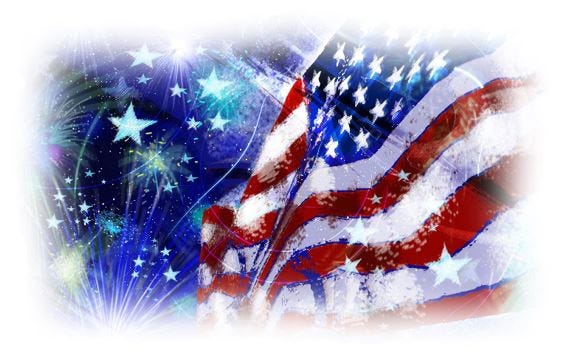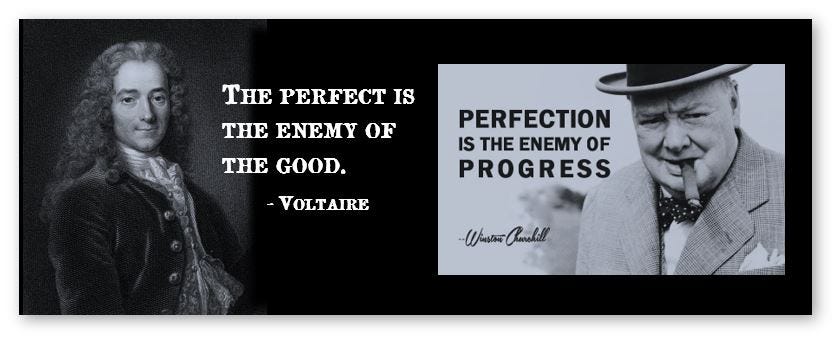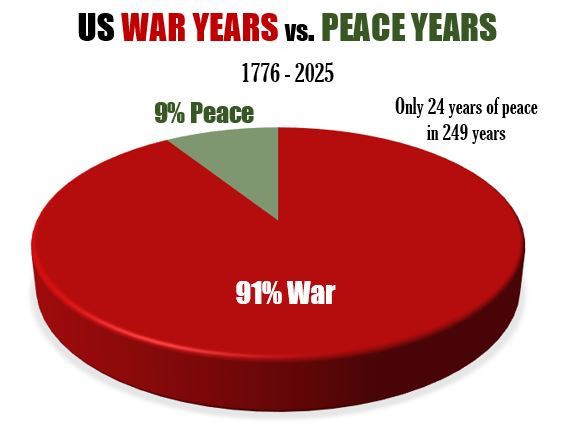7/3/25
“We, the People...” begins the most amazing document that ever shaped a new country.
But how many of us think about what the preamble itself tells us about the laws it introduces?
(Read to the end for a fun patriotic party trick.)
The seeds of every good story lie in the first few pages
In the preamble, the authors of the Constitution gave us a “preview of coming attractions” and a quick-reference snapshot for those who might not be able to remember (or understand) the details that followed.
Let’s break it down and examine the parts.
We the People of the United States...
This makes it clear that the document represents the voice of citizens prepared to be ruled by other citizens, not by a monarch or dictator or any other unaccountable boss or group.
It is the Peoples’ country, and its seat of government, the Capitol, is called “the People’s house.”
In Order to form a more perfect Union...
They didn’t shoot for the moon. All they wanted was a better country than the one they had broken from.
“More perfect.”
Many would argue that the Articles of Confederation or the Federalist Papers offered better ideas. And they may be right.
But the country was in a fragile state in those early years and desperately needed a common set of rules and commitments to unite around.
Did the Founders all agree? Absolutely not. But they negotiated and compromised fiercely to avoid holding out for “the perfect” that is the enemy of “the good.” (The Nirvana fallacy.)
Even imperfect, it was still a better system than what they’d left behind.
Because of those early compromises, most representatives took a beating from constituents back home. Yet, they supported the finished product, warts and all, for the good of the country.
We in the 21st century could learn from their example and be more willing to compromise “in order to form a more perfect union.”
Establish Justice...
The first objective on their list was justice. They had come from a place where the people had little say in government. And the American settlers had virtually none.
It was of paramount importance to define the parameters of law and justice to, not give, but protect the rights of the states, as well as the individual rights they believed every human was born with.
Yes, it would take too long for the Law to recognize the common humanity in all of us, not just white male property owners, and include the rest of us in our system.
But the baked-in adaptability of the supreme law ensured that “We, the People” would be able to smooth off the rough edges in the original plan as things changed and we got smarter (ideally).
The supreme law was designed to accommodate change. But the authors made sure the process was hard so we wouldn’t be tempted to tinker with it every time the political winds shifted.
It also created a balance between the interests of citizens and their states by ensuring the voters could pick their representatives for the House, and the states could pick their representatives for the Senate.
Of course, that balance was blown out of the water with the 17th Amendment, passed in 1913, a year notoriously bad for America (creation of the Federal Reserve System and the federal income tax).
Now, the people elect both their House and Senate representatives, while the state legislators have no voice in Congress, except as citizens.
Insure domestic tranquility...
Our Founders had a vision of social harmony and protection from violence within our borders. And they made this commitment on behalf of all future leaders to achieve and/or preserve it.
Some believe this commitment extends to parenting or babying us.
Others see it as ensuring we can all be free to express ourselves however we want as long as doing so doesn’t harm or interfere with somebody else’s freedom.
This notion, by the way, echoes both a very ancient rule of law, and the modern philosophy of Voluntaryism, sometimes called Anarchism (which, in this case, refers to a system without externally imposed laws, not a state of chaos and lawlessness).
Provide for the common defence...
This referred to securing our borders and preventing hostile invasion from outsiders.
The debate over what exactly constitutes a threat to the US from the outside began almost before the ink had dried on the Constitution.
George Washington was an isolationist who believed we should mind our own business and not get tangled up in other countries’ affairs.
Today, the slightest butterfly flap of domestic conflict anywhere on the planet can be labeled a “threat to the US” or, even more emotionally triggering, “a threat to democracy,” and bring forth the rain of US money and military from thousands of miles away
Since our country has been at war for most of its history, I have to assume our majority leadership has been in on the profit and power game since the beginning, overriding Washington’s isolationist preferences.
Promote the general welfare...
This commitment has been a much-debated slippery slope that is like a Teflon see-saw tipping from one side to the other with each different administration.
Does it mean the federal government should provide money so we can live, or free food, schooling, or healthcare? Does it mean the government must coddle and protect us even from ourselves?
Does it mean the government can force us to wear seatbelts or take pharmaceutical products or drink fluoride ... “for our own good”?
This notion continues to be debated and litigated. We aren’t likely to nail it down anytime soon.
And secure the Blessings of Liberty to ourselves and our Posterity...
Having been through a terrible breakup with the King of England, the Founders were hungry for a political environment where everyone could enjoy “life, liberty, and the pursuit of happiness,” recognized in the Declaration of Independence as inalienable rights.
The Constitution was the Founders’ best effort to create a framework that would protect those rights for as long as possible.
They didn’t want their children’s children’s children to have to go to war again for those same rights.
And yet, despite having built a “more perfect union,” by 1861, we were once again at war over rights and powers. This time the war was internal.
Still, the union survived and the Constitution evolved as it was designed to do.
Do ordain and establish this Constitution for the United States of America.
Finally, the authors, having made their best efforts to meet the commitments previously listed, made it clear that they all endorsed this framework on behalf of all citizens and states in this new nation.
Imagine how profoundly satisfying, and scary, it must have been to complete this document for those who believed so strongly in these principles they would invest their reputations, their fortunes, and even their lives.
America, the imperfect
I saw an article that claimed most Republicans love America, while most Democrats don’t.
From what I see in my own social circles, that could be true.
In recent decades, I have often been embarrassed to be an American, but I love my country with a passion.
I’d just like to see it shine again.
This Friday, I will focus on the positives, giving thanks for the blessings of liberty our Founders sacrificed so much to secure for us, their descendants.
Some patriotic fun
For those having July 4th celebrations, here’s a fun thing to try on your friends and family.
Wait a while for the beers to kick in. Then invite people to take turns reading the Preamble to the Constitution as it was printed in 1787 (below).
You’ll notice that there are a lot of extra Fs in there. Those are actually “long Ss,” an old style for lowercase S.
Make sure the readers pronounce all of them as Fs. By my count, there are 13.
And especially watch for the last example in “Conftitution.”
Have a safe and happy Independence Day!
RESOURCES
We The People – for kids
https://kids.laws.com/we-the-people
The Constitution of the United States: A Transcription
https://www.archives.gov/founding-docs/constitution-transcript
Landmark Legislation: The Seventeenth Amendment to the Constitution
https://www.senate.gov/about/origins-foundations/senate-and-constitution/seventeenth-amendment.htm









